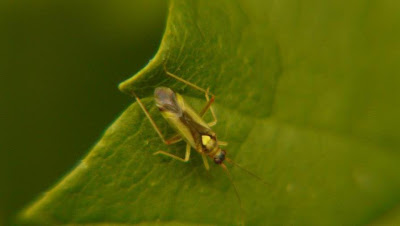 Only the females in the colony will fly out.
Only the females in the colony will fly out. 
here you can see the size difference between an ordinary worker in the colony and female members of the Ant society. Females will grow wings, mate and set up new colonies. Not all of these will be succesful though. The new queens will become major egg-laying machines, so to speak; hence the large body. After mating, she wil store enough sperm for the rest of her life. Being able to lay millions, if not more, eggs to help guarantee the future of this successful specie.
 An interesting fact: The global Ant population weigh as much as the human population does.!
An interesting fact: The global Ant population weigh as much as the human population does.!  They time their nuptial flight to just the right temperature, time of year (usually late july or early August) and level of humidity too, perhaps? That it needs to be dry speaks for itself, as they had trouble enough already, it seemed.
They time their nuptial flight to just the right temperature, time of year (usually late july or early August) and level of humidity too, perhaps? That it needs to be dry speaks for itself, as they had trouble enough already, it seemed. After about 3 weeks of wet weather where we had either showers or lashing rain, with dry intervals now and then. The wind had been strong during most of this year's summer too, keeping me from rides on the road for a lot of these months.
Last Monday, there was a change in the weather. It was close, no breeze at all, and I had a peculiar feeling all day. Then at about 5pm, Nina (our cat) went through the kitchen door, going outside for a quick wee before tea. As she went out, I saw a flutter of winged Insects flying up from what I assumed was the path under her feet. They all fluttered up into the air. Flying up was too big a word for the way they went, up.
As I sat in the doorway, i spotted these female Ants pushing themselves out of the lock of the door. They had wings alright, but that did not mean that they were able to fly yet! Winthin a few minutes, I was covered in very large Ants, flapping the wings; unsure what to do with these.
They walked up the door frame, thinking that height would help them in take off. Soon, most fell off!


Just outside of the door, tiny Spiders were waiting in anguish; they must have recognised the time in summer, and were waiting for the unlucky ones, whose legs would let go too early.
You cannot see much here, but look at the two white eyes of the Spider, as it takes a look who has offered itself to be his/her next meal.
 They had a field day! Probably for days/week9s?) on end. They weer tiny in comparison to the Ant. Unfortunately, it was too windy for sharp images; they kept swinging from end to end.
They had a field day! Probably for days/week9s?) on end. They weer tiny in comparison to the Ant. Unfortunately, it was too windy for sharp images; they kept swinging from end to end.
Here the Spider is wrapping its catch laboriously.




















































